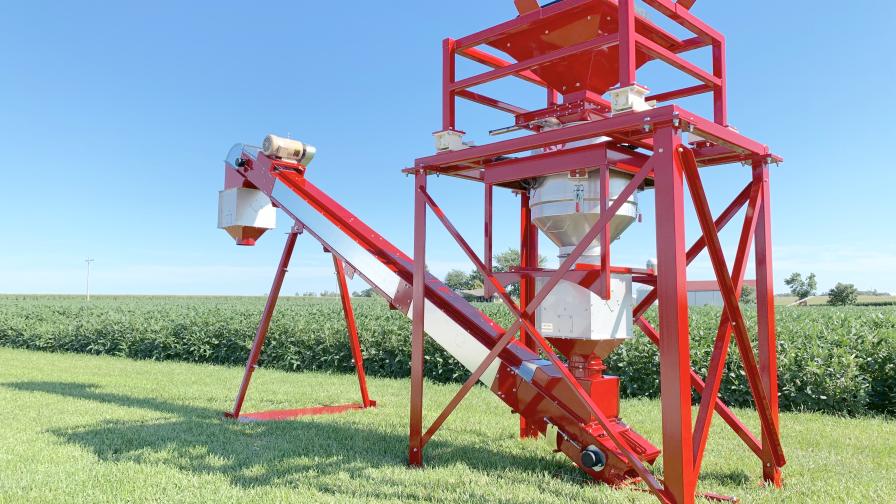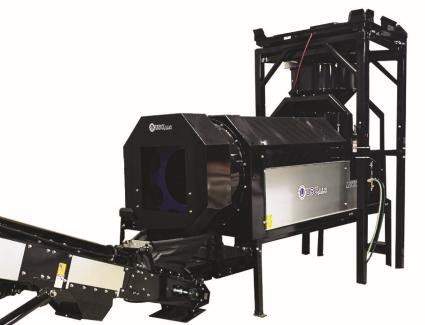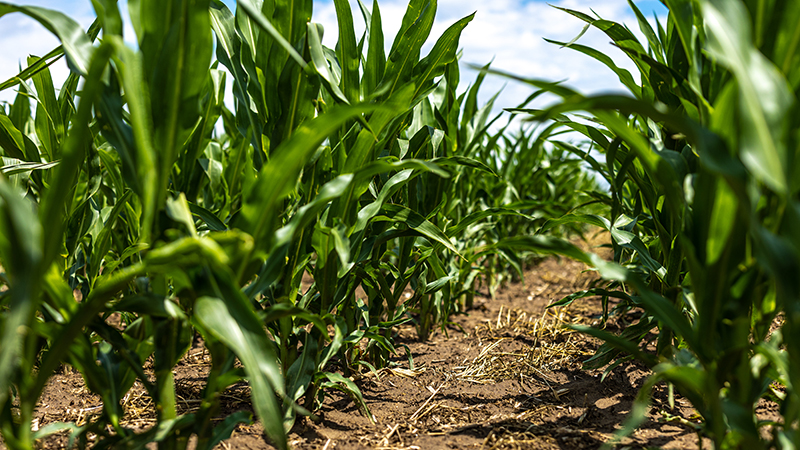Consolidation, Lower-End Options Move the Seed Treater Conversation

Lower-priced options, like KSi’s 02PRO SC Seed Applicator, are signifi cant for today’s challenged market. Photo credit KSi
Andy Renyer, Owner and Chief Executive of USC LLC shares in his concise, no beating-around-the-bush way, that there are two main opportunities for the seed treating market in 2020 that will carry through to 2021.
The first is brought about by consolidation — ag retail is getting rid of treating locations and putting in more supersites. The other key opportunity comes down to capturing the lower-end market of those unwilling or unable to spend $100,000-plus on a new machine.
Renyer, who owns and operates USC with his brother Jim, bought back their company from former joint venture partner AGCO in late December 2019. We caught up with Andy in September to discuss the path of the seed treating market and how the company they founded in northeastern Kansas is adapting to the tough market conditions.
USC has about 70% of the market of manual treaters at a downstream location, and the manual variety, said Renyer, accounts for roughly half the treating machines in the industry.
“Most of those locations are in lockdown on spending any money on them to improve functionality,” he said, citing the beatdown of four years of low commodity prices. In response, the industry is seeing the aforementioned increased consolidation with the shuttering of treating locations and centralizing them into supersites. Seed treating, therefore, is shifting further out and more money is being spent on one location to increase automation, accuracy, and capacity.
“In essence they are spending more on their upgrade than they did on their original bulk site. That’s good news,” Renyer shared. Currently, a co-op might have a manual treater with two to three bulk bins to which they bring their seed and treat for the farmer on demand. “They may want to go for a high-capacity, LPV fully automated treater, add two or three more bins, and change out their conveyer. The original system might have cost $200,000 and the upgrades may be $400,000. That’s the significance of how times have changed with equipment and pricing.”
The higher-end treaters in these locations that are consolidating make up about 40% of USC’s sales. Meanwhile, a dearth of lower-cost alternatives led Renyer to find a way to satisfy demand. USC launched a simplified automated treater called LPX Lite at Farm Progress last year, and already, it captures half of its total treater sales, Renyer said.
LPX Lite, with a price tag of around $60,000, runs at 60% of the cost of high-end models like the LPV fully automated treater, goes up to four pump stands, and carves off some of the extra features and functionality of those pricier models without sacrificing accuracy or efficiency. “It’s kind of like an iPhone 6 instead of an iPhone 11,” he said. “LPX Lite really uses the exact same technology (as other of its higher-end models). We just eliminated a bunch of the accessory things that add up cost. It’s been quite successful.
“We’re doing everything we can to get rid of old manual treaters to put something like (LPX Lite) in those older operations,” he said. To that end, one of the orders of business upon retaining full ownership of their company once again in early 2020 was deploying 12 customer support technicians to call on its treater base, spending more time at each individual location.
“We want to control our own destiny,” Renyer said, joking that “the reason there are all these manual treaters that are still out in the industry, is because they’re like Cuba. They’ve not heard about the newest treater yet; we want to let them know about these simple automation upgrades.”
Rick Smith, KSi Marketing Director, echoed Renyer on the trend toward lower-cost options for seed treaters. Overall product sales of KSi seed treating equipment, he remarked, have remained steady despite the pandemic.
“We’re pleasantly surprised in the level of interest that continues in our products,” he said.
For the high-volume, higher-end market, KSi offers its continuous drum treater, the 4808NGA Seed Applicator, in which seed falls through an atomizer chamber, where chemical is sprayed onto the seed and then falls into a cylinder drum that mixes it before it discharges.
Aimed at the entry-level market, it is also introducing the SC series applicator, which is the same atomizer with a conveyor on it as opposed to a drum for gentle and thorough mixing of the treated seed. The 02PRO SC model is used for lower-volume soybeans and over-treating corn, while the 03PRO SC can handle as much volume as its drum treater. “It just comes at a more economical package and has a slightly different operation,” Smith said.
Smith has observed the shift in the last couple of seasons toward advancing the data management side of seed treating. “A lot of our customers are looking to do the next level. They will come to us looking to integrate their seed treating system with their billing system, for example.” KSi’s technology ties them together, and it has also been able to connect its system to partner systems, used for things such as recipe validation.
“It’s a way to show the grower that what they’re paying for to have applied to their seed, is applied that way. There’s a transparency in that transaction that is brought to light,” Smith added. For the applicator, it’s one more convenience and one more automated step in ensuring accuracy and reduced wasted chemical.
The software side of KSi systems is vastly improved. In the past, if a user wanted to come up to date, they were forced to make another investment every time. Now, they can buy a subscription that guarantees their equipment will continually be upgraded.
“It’s not really that expensive and it allows us to put customers in a position where they’re always on the leading edge, and it allows them to take advantage of new technology that may not be available today but may be tomorrow.”
Embracing The Cloud
For Agrilead, supplier of seed treatment additives and dry seed finishers for seed care and developer of a new digital seed care management platform, it’s tough to quantify the impacts of the COVID-19 pandemic because, as President Jeff Ochampaugh sees it, future developments have likely been hardest hit.
“I think we’re going to discover that in the year or years to come,” he told CropLife®. “If anybody can minimize the impacts of it, I think our industry can. I think we’re tough, we’re practical, and we figure out how to get things done anyway.”
Agrilead’s consumable products represent 90% of its business and has been exposed to supply disruptions involving intermediate chemicals such as some imported from China. The pandemic created the necessary business risk of manufacturing and building inventory early, before securing forecasts and commitments from customers, Ochampaugh explained.
“We’re focused on being ready to supply the market. We’re probably more in tune and sensitive to that than in the past because we don’t want to put ourselves in a customer’s vulnerable place.”

The LPX with the U-Treat LITE platform combines a straight-forward automation experience, with high accuracy, and configurable options. Photo Credit: USC
The company is now prepping for a full launch of its cloud-based seed care management platform, Seed Care Pro for the 2021 growing season, the outcome of its product development efforts to respond to the evolving seed treater market. Agrilead entered into a collaborative business agreement with USC on the platform, Ochampaugh said, through which Seed Care Pro can be connected to USC treating systems. Currently, USC’s is the only treating system to which Agrilead’s platform can be connected directly.
The tool is designed to help seed care operators manage the operational demands of the treating season. Plant growth regulators, nutritionals, biologicals in addition to fungicides and insecticides have to be applied to the seed correctly, at the right rates, and all of the information has to be tracked and communicated to the operations team in order to execute the treatment. That team, then, keeps the record and reports back what happened. Seed Care Pro pulls that all together, Ochampaugh explained.
“Our philosophy has been that we needed to embrace the cloud as the setting for such a management system,” he said.
Integral to the approach, too, is reaching out to the seed care industry to secure more partnerships. “We think it’s becoming increasingly difficult for anyone to become an expert in all aspects and all phases of seed care,” he said. “It’s becoming more important for us to carve out and find the things that we are experts in, and to become the very best at those and recognize that we can’t do everything.” This means positioning the company with others in the industry to bring meaningful and productive solutions to the customer.
Ochampaugh shared his passion for seed: “We’re only one little part of it, but every one of us that touched that seed played a role in bringing the promise represented in that seed to life. That pumps me up, and it’s something that gets me excited every day. And it also reminds me of the responsibility we have to our customers, to our industry, to try our very best, to do it right. Whether we recognize it or not everything in agriculture depends upon the outcome of that seed.”






